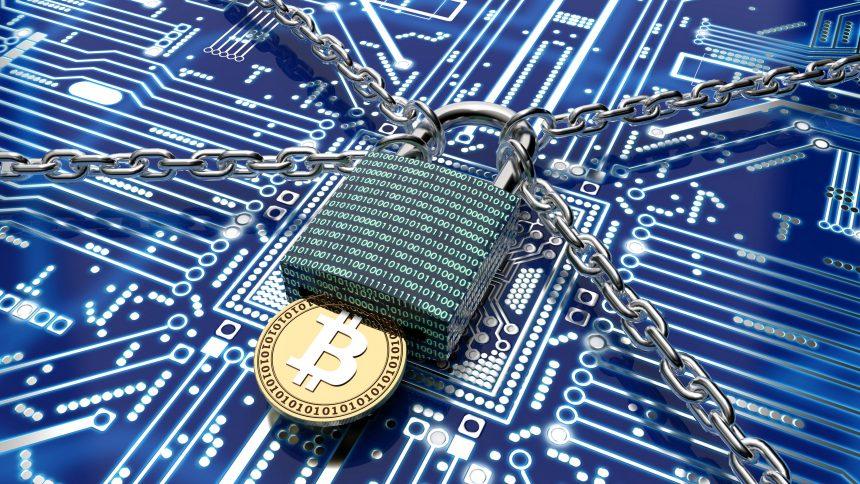Ransomware is a form of malicious software designed to block access to a computer system or files until a sum of money is paid. It typically infiltrates systems through phishing emails, malicious downloads, or vulnerabilities in software. Ransomware attacks can be devastating, not only crippling personal or business data but also leading to significant financial loss and emotional distress. One of the more recent threats in this category is Hawk ransomware, which has garnered attention for its insidious methods and damaging consequences.
The Hawk Ransomware Threat
Hawk ransomware is a type of crypto-ransomware that encrypts files on the victim’s system, rendering them inaccessible until a ransom is paid. This particular strain is notorious for its ability to infiltrate a wide array of systems. It often spreads through malicious email attachments, compromised software downloads, or through exploit kits that take advantage of unpatched vulnerabilities.
Download SpyHunter Now & Scan Your Computer For Free!
Remove this and any other malicious threats to your system by scanning your computer with SpyHunter now! It’s FREE!
Installation and Functionality
Once installed, Hawk ransomware executes a series of processes that lock user access to critical files. The malware typically changes the file extensions of affected documents to a unique format, making them unrecognizable. For example, a file named document.docx may be altered to document.docx.id[XX-B2750012].[sup.logical@gmail.com].hawk. This alteration is a critical step, as it indicates to the user that their files are no longer accessible.
After encrypting the files, Hawk ransomware generates a ransom note that appears on the victim’s desktop. This note often includes demands for payment in cryptocurrency, providing instructions on how to obtain the currency and transfer it to the attackers.
Consequences of Infection
The consequences of a Hawk ransomware infection can be severe. Not only does it result in the loss of access to important files, but it can also lead to a complete halt in productivity for businesses and individuals alike. The emotional and financial toll can be significant, as victims face the dilemma of paying the ransom or losing their data forever.
Ransom Note Overview
Hawk ransomware leaves a detailed ransom note once it has completed its encryption process. This note typically includes:
- A message indicating that files have been encrypted.
- Instructions for contacting the attackers, often through a specific email address or website.
- A demand for payment in cryptocurrency, usually Bitcoin.
- A countdown timer, suggesting a deadline for payment to encourage compliance.
- Threats of permanent data loss if the ransom is not paid within the specified time.
This ransom note (“#Recover-Files.txt“) is a crucial element of the attack, instilling fear and urgency in the victim.
Text in the ransom note:
!!! Your files have been encrypted !!!
To recover them, contact us via emails
Write the ID in the email subject.
ID: –
Email1: sup.logical@gmail.com
Email2: logical_link@tutamail.com
Before paying you can send 2-3 files less than 1MB, we will decrypt them to guarantee.
IF YOU DO NOT TAKE CARE OF THIS ISSUE WITHIN THE NEXT 48 HOURS, YOU WILL FACE DOUBLE PRICE INCREASE.
WE DON’T PLAY AROUND HERE, TAKE THE HOURS SERIOUSLY.
Family of Ransomware
Hawk ransomware is believed to belong to a growing family of ransomware variants that use similar encryption techniques and demand structures. This categorization underscores the ongoing evolution of ransomware threats and the importance of remaining vigilant.
Symptoms of Hawk Ransomware Infection
Recognizing the signs of Hawk ransomware infection can be critical for timely intervention. Common symptoms include:
- Inability to open files or applications.
- Strange file extensions on documents and media files.
- Pop-up messages demanding ransom payment.
- Unusual behavior of the system, such as slow performance or unexpected crashes.
- Appearance of new files with ransom notes on the desktop.
Detection Names
To determine if Hawk ransomware is present on a system, users can look for the following detection names commonly associated with this threat:
- Hawk Ransomware
- .hawk File Extension
- CryptoLocker Variant
- Ransom.Win32.Hawk
Similar Threats
Users may encounter other ransomware threats that function similarly to Hawk ransomware, including:
- LockBit Ransomware: Known for its fast encryption process and extensive file-locking capabilities.
- REvil Ransomware: A highly sophisticated ransomware strain that has caused significant damage globally.
- Conti Ransomware: Recognized for its double-extortion tactics, demanding ransom payments while threatening to leak sensitive data.
Comprehensive Removal Guide
If you suspect that your computer has been infected with Hawk ransomware, follow these detailed steps to remove the malware:
Download SpyHunter Now & Scan Your Computer For Free!
Remove this and any other malicious threats to your system by scanning your computer with SpyHunter now! It’s FREE!
- Disconnect from the Internet: Immediately disconnect from the internet to prevent further data loss and stop the ransomware from communicating with its command and control server.
- Enter Safe Mode:
- Restart your computer.
- For Windows 10/11: Hold the
Shiftkey while clicking on Restart from the Power menu. - Navigate to Troubleshoot > Advanced options > Startup Settings > Restart, then select Safe Mode with Networking.
- Delete Suspicious Files:
- Open Task Manager by pressing
Ctrl + Shift + Esc. - Look for suspicious processes that might be related to Hawk ransomware. Right-click and select “End Task.”
- Open File Explorer and delete any files that are unknown or suspicious, especially from temporary folders.
- Open Task Manager by pressing
- Scan with Anti-Malware Software:
- Download and install a reputable anti-malware tool such as SpyHunter.
- Run a full system scan to identify and remove Hawk ransomware and any other threats.
- Restore Files from Backup: If you have backups of your files, restore them after ensuring that the ransomware is completely removed from your system.
- Change Passwords: Update passwords for your accounts to prevent unauthorized access, especially if you used the infected device to log into sensitive accounts.
Prevention Strategies
To avoid future infections by Hawk ransomware or similar threats, consider the following preventive measures:
- Keep Software Updated: Regularly update your operating system and applications to patch vulnerabilities.
- Use Reliable Security Software: Install and maintain reputable anti-malware software that offers real-time protection.
- Be Wary of Email Attachments: Avoid opening attachments or clicking links from unknown senders.
- Regular Backups: Maintain regular backups of your important files on external drives or cloud storage.
For users looking for a robust solution to protect their systems from Hawk ransomware and other malware, SpyHunter offers comprehensive scanning and removal features. Download it today for a free scan and take the first step toward securing your system against ransomware threats.
Conclusion
Hawk ransomware represents a significant threat to individuals and businesses alike. By understanding its functionality, recognizing symptoms, and following a detailed removal guide, users can safeguard their systems. Remember to prioritize prevention strategies to minimize the risk of future attacks.





